Abstract
Peanuts grown under dryland conditions where drought stress occurred accumulated more aflatoxin before digging than peanuts grown under irrigation. Kernels became more susceptible to Aspergillus flavus and A. parasiticus invasion when the soil moisture in the pod zone approached levels at which moisture moved from the pod into the soil and the kernel moisture dropped below 31%. Isolation frequencies of these aspergilli from fresh-dug kernels were lowest in 1968 (maximum of 3%). In 1967 and 1969, maximum percentages of 100 and 74, respectively, were noted. Kernel infestation was correlated with degree of aflatoxin contamination. Dryland fresh-dug kernels contained a maximum of 35,800 parts per billion aflatoxin while a maximum of 50 parts per billion was detected in kernels from irrigated plots. In 1969 A. flavus infestation was as high as 59% in peanuts from irrigated plots; however, no aflatoxin was detected. Absence of aflatoxin in these samples is attributed to the higher kernel moisture content which reduced the aflatoxin-producing potential of A. flavus. Statistical analysis of the data revealed no significant differences in degree of fungal infestation, production levels, and grade factors between any fungicide treatments.
Full text
PDF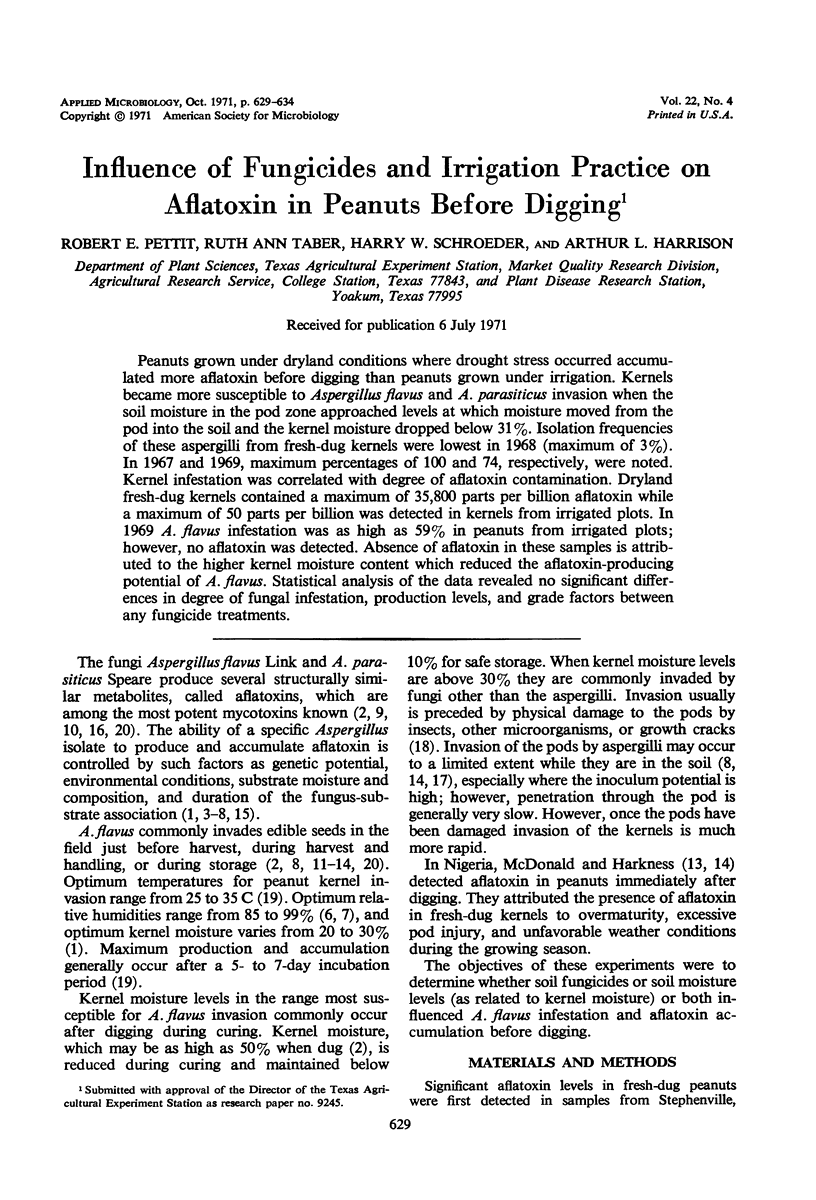
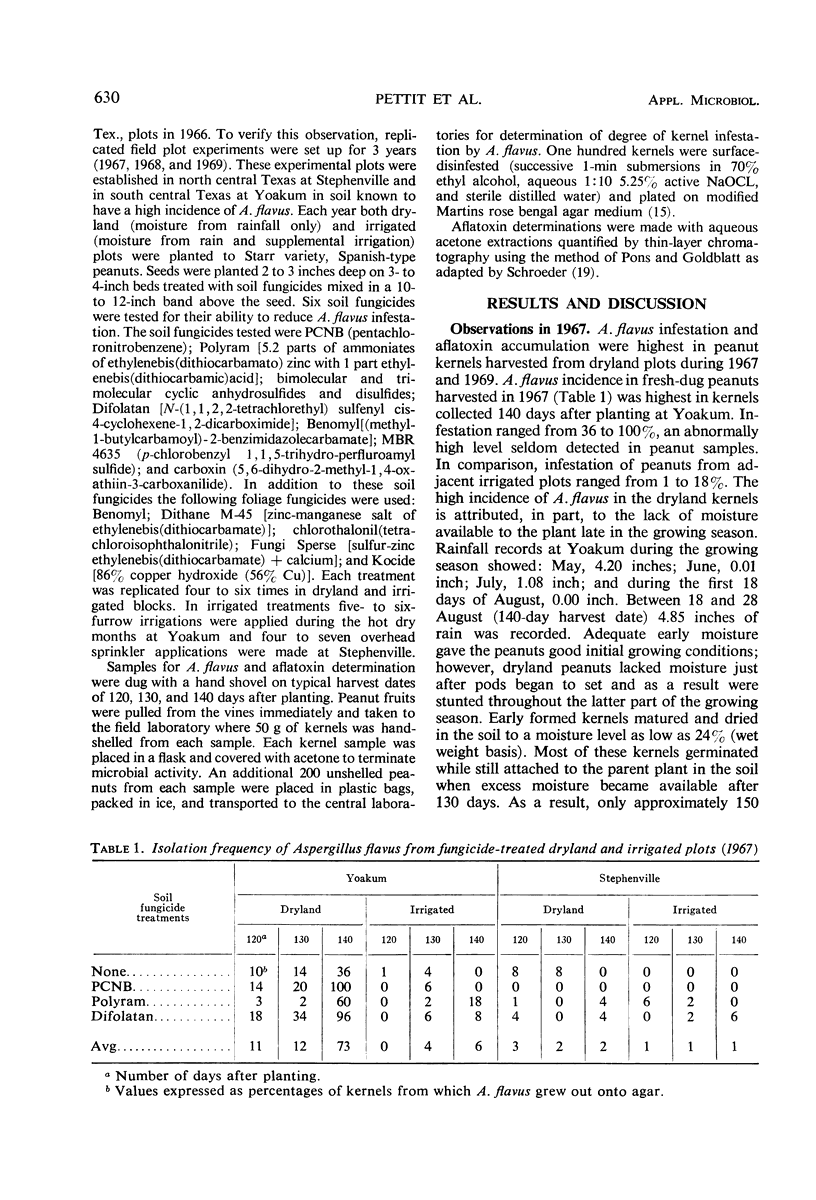
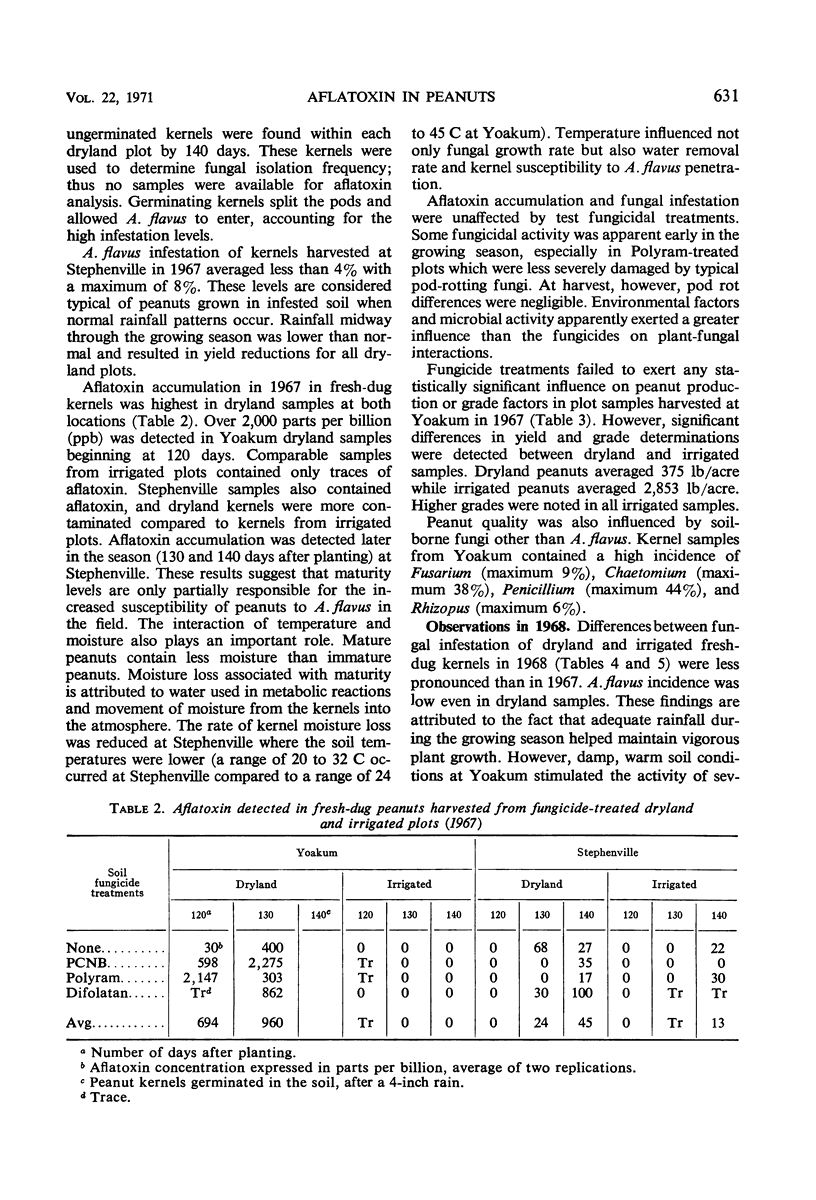
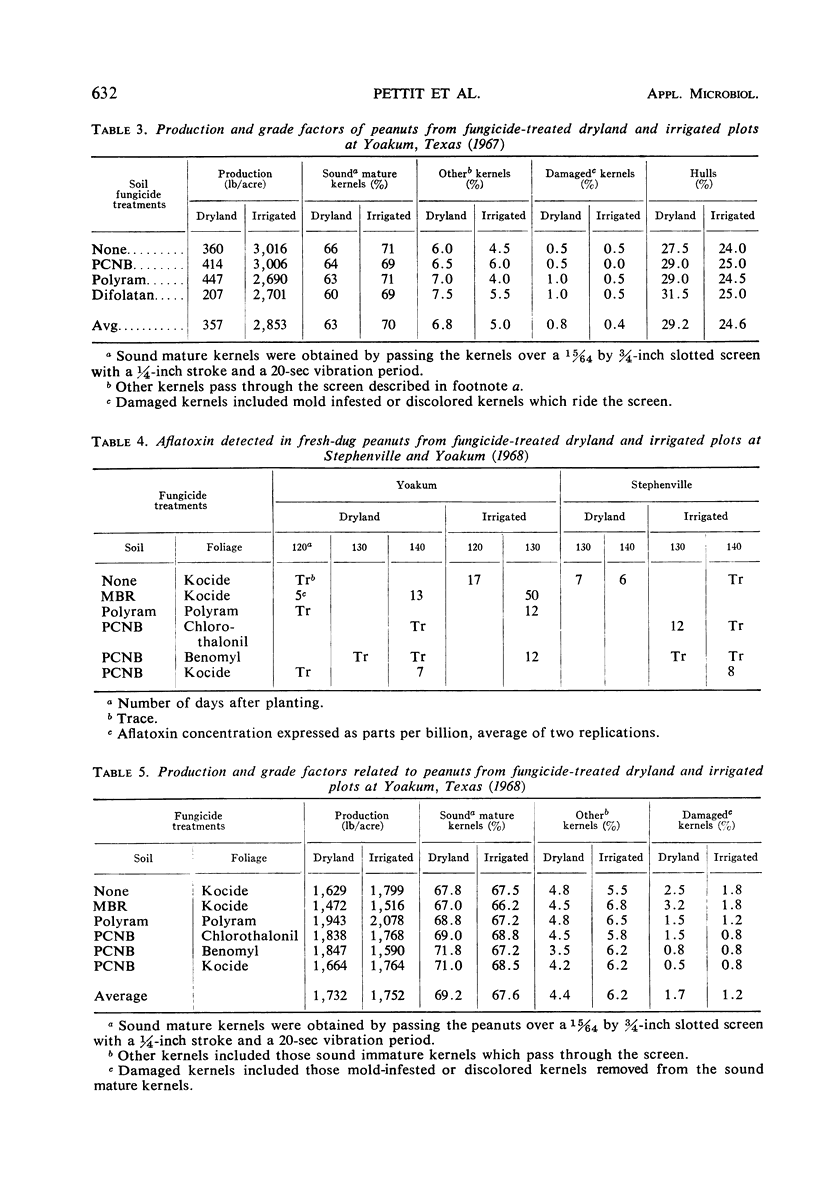
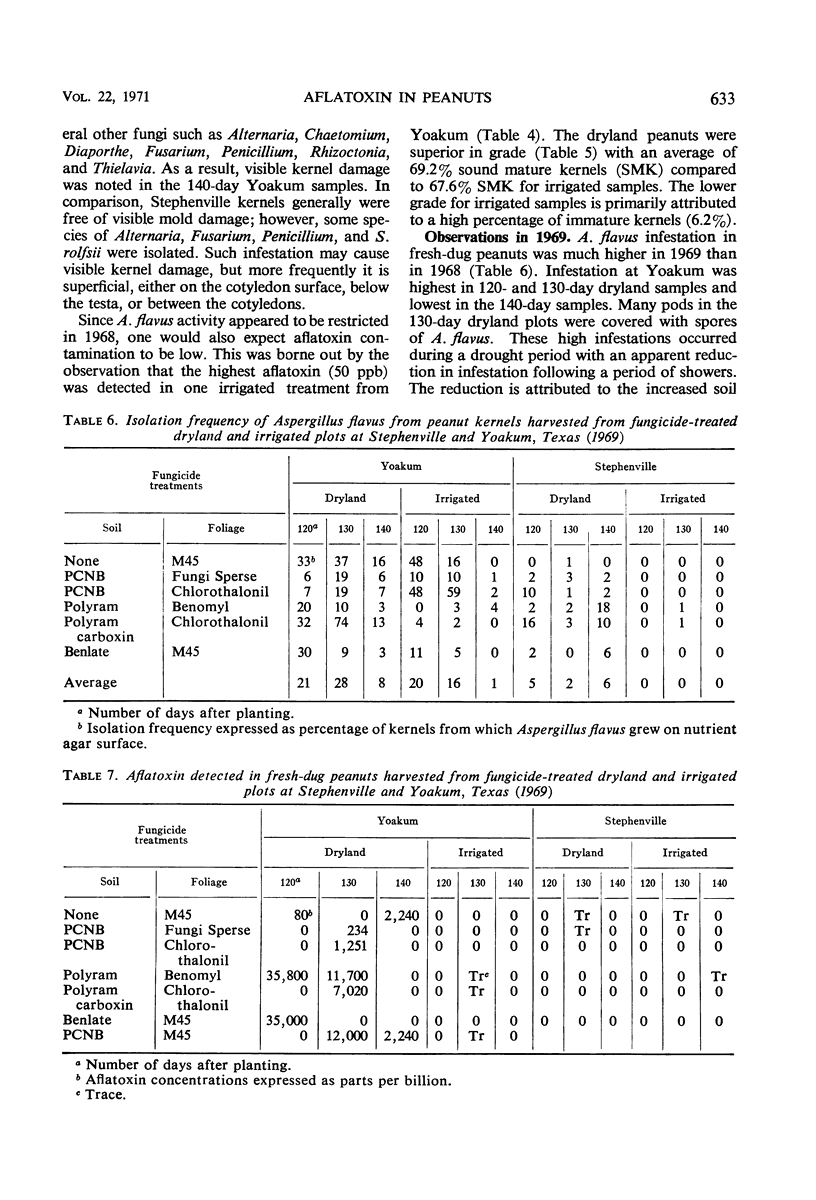
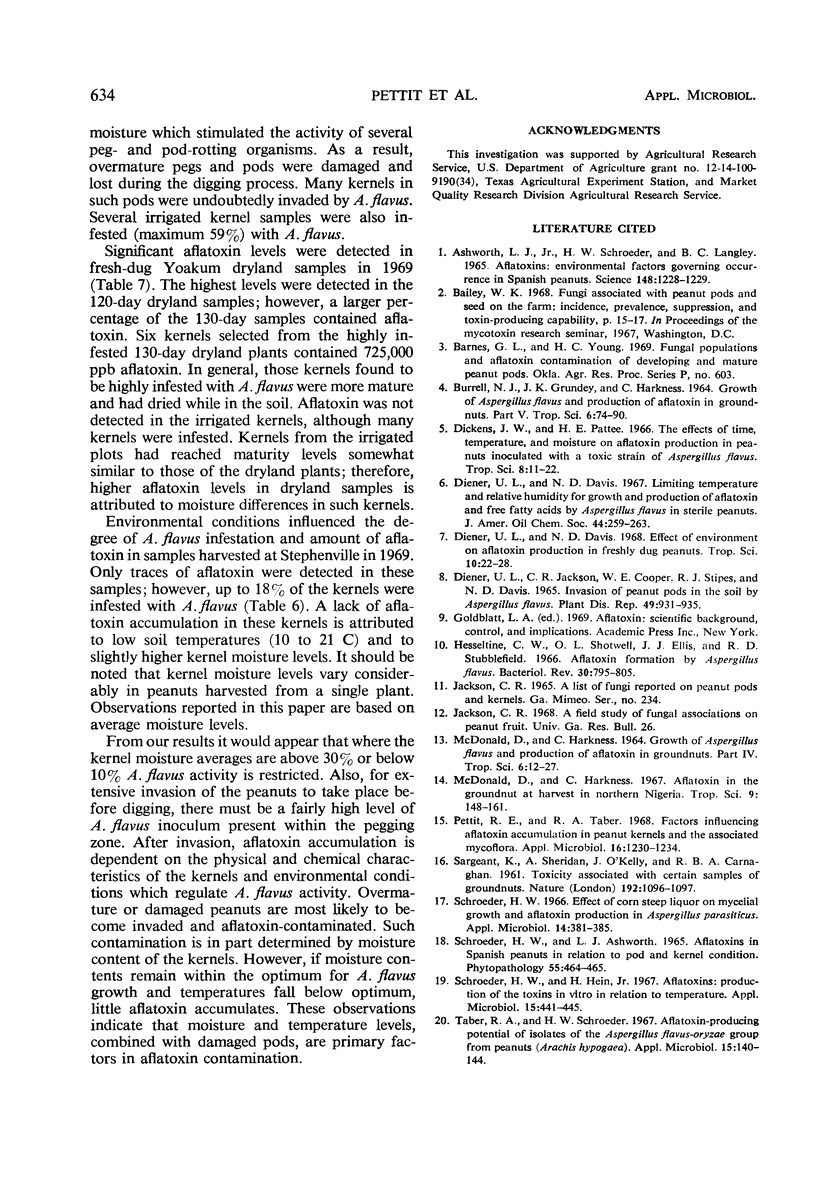
Selected References
These references are in PubMed. This may not be the complete list of references from this article.
- Ashworth L. J., Jr, Schroeder H. W., Langley B. C. Aflatoxins: Environmental Factors Governing Occurrence in Spanish Peanuts. Science. 1965 May 28;148(3674):1228–1229. doi: 10.1126/science.148.3674.1228. [DOI] [PubMed] [Google Scholar]
- Diener U. L., Davis N. D. Limiting temperature and relative humidity for growth and production of aflatoxin and free fatty acids by Aspergillus flavus in sterile peanuts. J Am Oil Chem Soc. 1967 Apr;44(4):259–263. doi: 10.1007/BF02639271. [DOI] [PubMed] [Google Scholar]
- Hesseltine C. W., Shotwell O. L., Ellis J. J., Stubblefield R. D. Aflatoxin formation by Aspergillus flavus. Bacteriol Rev. 1966 Dec;30(4):795–805. doi: 10.1128/br.30.4.795-805.1966. [DOI] [PMC free article] [PubMed] [Google Scholar]
- Pettit R. E., Taber R. A. Factors influencing aflatoxin accumulation in peanut kernels and the associated mycoflora. Appl Microbiol. 1968 Aug;16(8):1230–1234. doi: 10.1128/am.16.8.1230-1234.1968. [DOI] [PMC free article] [PubMed] [Google Scholar]
- Schroeder H. W. Effect of corn steep liquor on mycelial growth and aflatoxin production in Aspergillus parasiticus. Appl Microbiol. 1966 May;14(3):381–385. doi: 10.1128/am.14.3.381-385.1966. [DOI] [PMC free article] [PubMed] [Google Scholar]
- Schroeder H. W., Hein H., Jr Aflatoxins: production of the toxins in vitro in relation to temperature. Appl Microbiol. 1967 Mar;15(2):441–445. doi: 10.1128/am.15.2.441-445.1967. [DOI] [PMC free article] [PubMed] [Google Scholar]
- Taber R. A., Schroeder H. W. Aflatoxin-producing potential of isolates of the Aspergillus flavus-oryzae group from peanuts (Arachis hypogaea). Appl Microbiol. 1967 Jan;15(1):140–144. doi: 10.1128/am.15.1.140-144.1967. [DOI] [PMC free article] [PubMed] [Google Scholar]


